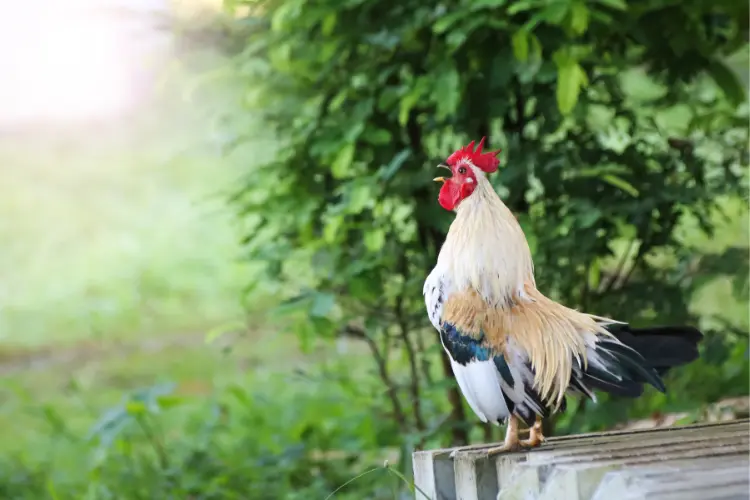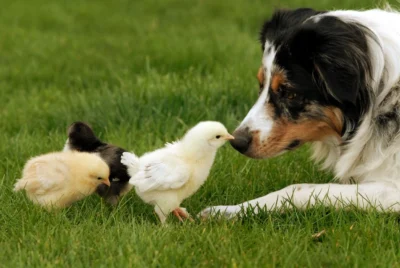Understanding Chicken Communication: Sounds Explained
Chickens are not just funny, fluffy creatures roaming around the backyard. They have a unique language that allows them to communicate within their flock. If you’ve ever wondered what clucks and cackles really mean, get ready to dive into the fascinating world of chicken sounds and communication!
Have you ever watched your chickens gossiping and wondered what they are discussing? Chickens are highly social creatures, and communication plays a vital role in their day-to-day lives. They use sounds to convey messages, from announcing sunrise to alerting the flock of dangers.
Types of Chicken Vocalizations
Let’s decode the chicken dictionary! Chickens use a diverse range of vocalizations, each serving a specific purpose. Let’s explore common chicken sounds and their meanings.
Clucks: Soft, repetitive sounds like casual chatter among friends. Chickens cluck to communicate contentment, signal the availability of food, or guide their fluffy chicks to safety. Picture a mother hen clucking proudly as her chicks peck around for treats.
Cackles: When a chicken is feeling proud or excited, you’ll hear them cackle away. This enthusiastic noise often accompanies the successful laying of an egg. It’s like they’re saying, “Look what I just accomplished!”
Squawks: The alarm sound! Squawks indicate potential danger, and the entire flock listens and responds to this warning. They are like a vigilant neighborhood watch, always looking out for each other.
Purrs: Chickens can purr too! Purring is a gentle, soothing sound they make when they are relaxed and content. Next time you see your chickens basking in the sunshine, listen closely for those peaceful purrs.
Rooster Crowing
Ah, the rooster’s crow, the quintessential sound of the countryside! Roosters are the alarm clocks of the chicken world, but their crowing isn’t just about waking everyone up. They have a unique language of their own.
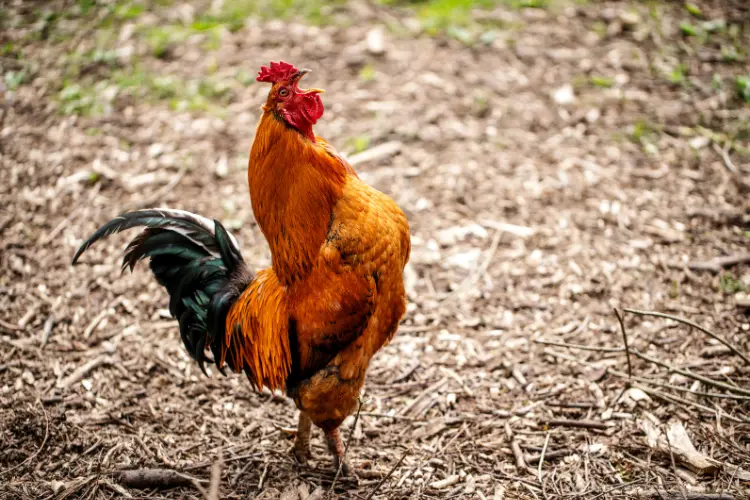
Announcing Sunrise: Roosters are early risers, and their crow at dawn marks the start of a new day. But it’s more than just a wake-up call; it’s a proclamation of their presence and readiness to protect the flock.
Asserting Dominance: Roosters use their crow to establish their dominance in the pecking order. It’s like they are saying, “I’m the boss around here, so listen up!”
Warning of Danger: Roosters are also protectors of the flock, and their crowing can be a signal of impending danger. When a rooster senses a predator nearby, he lets out a loud and urgent crow to warn the hens to take cover.
Read also: How Many Hens Per Rooster: The Numbers You Need to Know
Distress Calls and Warning Sounds
Chickens are a cautious bunch, and they have developed various distress calls and warning sounds to keep each other safe.
Predator Alarms: When a chicken spots a potential predator, they emit a high-pitched, panicked sound that immediately puts the entire flock on high alert. It’s like they are yelling, “Danger! Danger! Everyone, hide!”
Distress Calls: Chickens emit distress calls when they are in a sticky situation or feeling threatened. These calls can vary depending on the type of danger they perceive, be it a predator, a sudden change in the environment, or even when they get lost from the flock.
Mother Hen Sounds
Mother hens have a unique set of vocalizations and behaviors when communicating with their chicks. It’s a heartwarming and protective form of chicken talk.
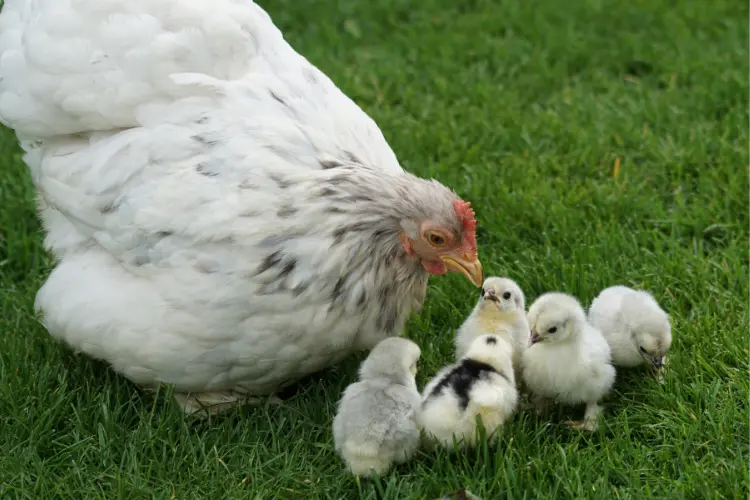
Clucking to Communicate: Mother hens use soft clucks to communicate with their chicks. It’s like they are offering words of encouragement and guidance as the fluffy little ones navigate the world.
Calling Them to Safety: When a mother hen senses danger, she calls out to her chicks with a distinct sound that prompts them to seek refuge under her protective wings. It’s a beautiful example of the bond between a mother and her chicks.
Dominance and Submission Chicken Sound
Within the chicken flock, there is a pecking order, and chickens have their way of expressing dominance and submission.
Growls and Cackling: When chickens vie for dominance, you might hear them growl or cackle loudly to assert their position in the social hierarchy. It’s like the chicken version of a heated debate!
Submissive Postures: On the flip side, chickens display submissive behavior through their body language. They may lower their heads, flatten their feathers, and even lay their bodies on the ground to show deference to higher-ranking members.
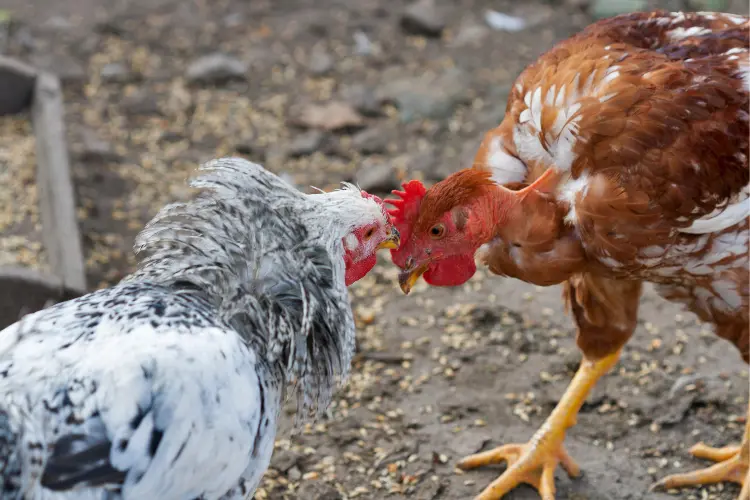
Communicating Needs and Desires
Chickens are vocal about their needs and desires too! By paying attention to their specific sounds, you can better understand what they are trying to convey.
Food and Water: Listen for specific clucks and chirps during feeding time! Chickens have different vocalizations for different types of food, and they’re not shy about demanding their favorite treats.
Nesting Calls: When a hen is ready to lay her eggs, she might make a unique sound to signal her intent to her fellow flock members. It’s like they’re asking for a bit of privacy while they get the job done!
Social Interactions: Chickens are social creatures, and they have various sounds to communicate their feelings and intentions during interactions with other flock members. Just like us, they have their way of saying, “Let’s be friends!” or “I need some space.”
Interpreting Body Language
Chicken sounds are rarely standalone communications; they are often accompanied by specific body language cues. Understanding these cues can provide even deeper insights into what your chickens are trying to tell you.
For example, when a hen clucks gently while keeping her body close to the ground, she’s likely calling her chicks to gather and settle down. On the other hand, if a hen fluffs up her feathers and makes assertive vocalizations, she may be establishing her authority in the flock.
Encouraging Effective Communication
Creating a harmonious communication environment within your chicken flock is essential for their well-being. Here are some tips to ensure your chickens can express themselves freely:
Reduce Stress: A calm and stress-free environment encourages chickens to communicate comfortably. Avoid sudden loud noises or disturbances that can startle them.
Adequate Resources: Make sure there’s enough food, water, and nesting space for all your chickens. A well-fed and content chicken is more likely to communicate positively.
Promote Social Interactions: Chickens thrive on social interactions. Provide plenty of space for them to roam and interact with each other.
Read also: What Should Be Inside a Chicken Coop Today – 10 Unseen Items
Understanding Vocalizations in Different Breeds
Did you know that different chicken breeds might have their own unique vocalizations? For example, Rhode Island Reds are known for their distinctive clucking, while Silkies have soft and melodious calls. Understanding these breed-specific sounds can help you cater to the individual needs of each chicken.
Conclusion
Chickens have their language of sounds and signals to communicate with each other and with us. By decoding their vocalizations and observing their body language, you can forge a deeper connection with your flock and provide them with the care they need. So next time you’re in the backyard with your feathered friends, listen closely to the chicken talk and respond with the same level of love and understanding they offer you every day!

